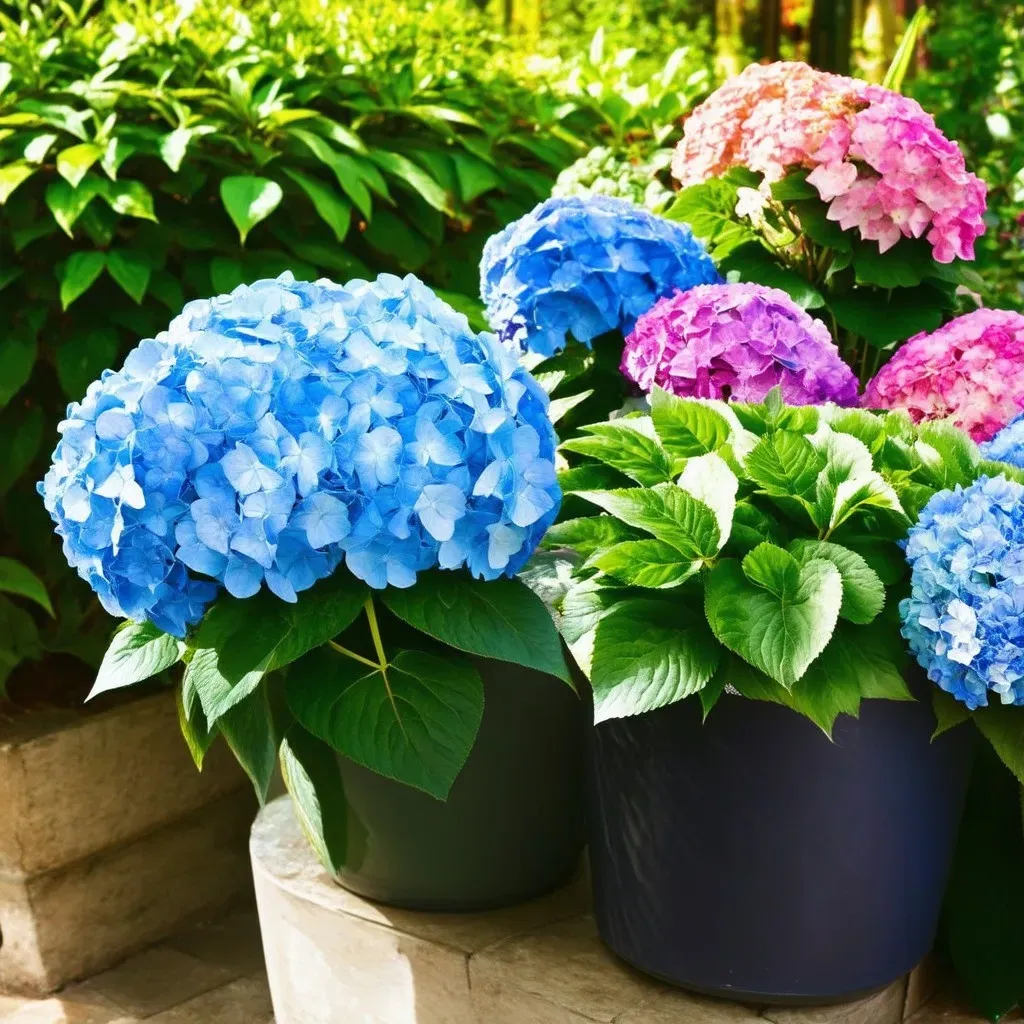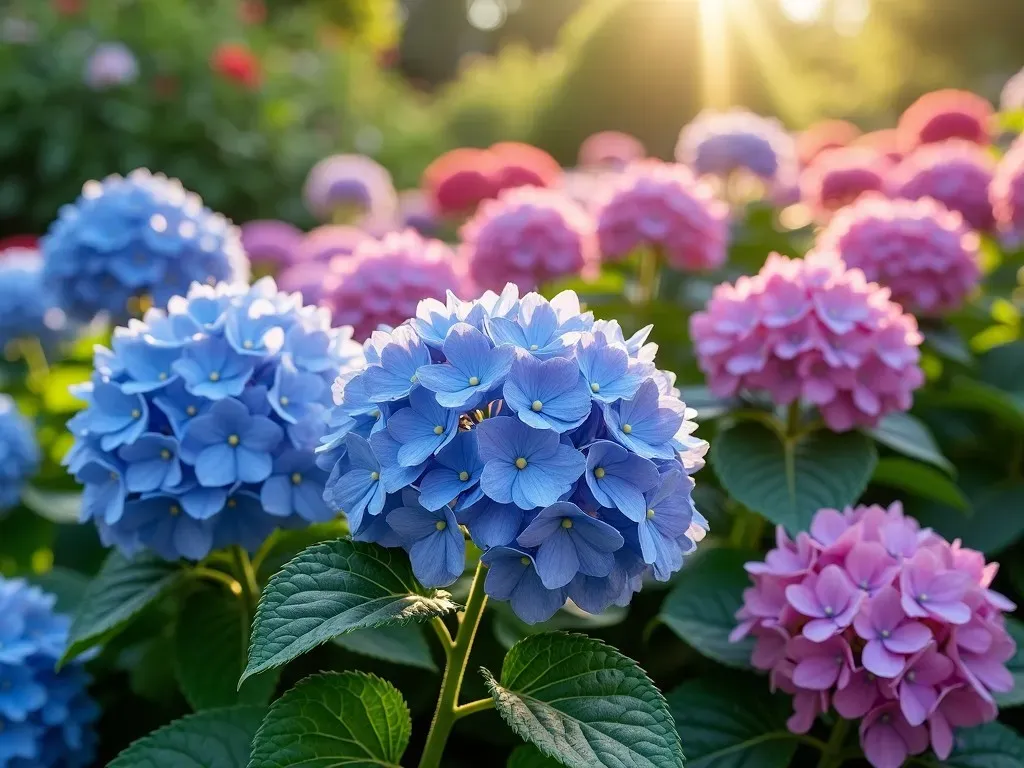Hydrangeas are stunning plants that can brighten any garden with their vibrant blossoms. One of the most common questions among hydrangea enthusiasts is: how often to water hydrangeas? The answer to this query is not straightforward, as it depends on various factors, including the type of hydrangea, the climate, the soil type, and the specific growing conditions.
To ensure your hydrangeas bloom beautifully, they generally require about 1 inch (2.5 cm) of water per week. This may come from rainfall or supplemental watering, depending on the weather and the specific conditions of your garden or container.
Understanding Hydrangea Water Needs
How Much Water Do Hydrangeas Need?
Hydrangeas love water, but it is crucial to know how much is enough. Here’s a quick breakdown:
| Condition | Water Requirement |
|---|---|
| Newly Planted | 2-3 times per week |
| Established Plants | Once a week or as needed depending on the soil moisture |
| Hot and Dry Weather | Increase to every 3-4 days or as needed |
| Rainy Season | Reduce watering or abstain altogether |
Note: Always check the soil moisture before watering. Hydrangeas may require more water in the summer and less in spring and fall.
Factors Affecting Watering Frequency
-
Soil Type: Well-draining soil (such as sandy loam) will dry out faster than clay soil, which retains moisture longer.
-
Sun Exposure: Plants in full sun typically need more water compared to those in partial shade.
-
Hydrangea Variety: Different species, such as Nippon or Macrophylla, may have varying water needs.
-
Climate: Hot, dry climates demand more frequent watering.
Hydrangea Watering Techniques
-
Deep Watering: Rather than frequent shallow watering, practice deep watering techniques to encourage deep root growth.
-
Use Mulch: Adding mulch around the base can help retain soil moisture. Organic mulches, such as wood chips or bark, are excellent choices.
-
Morning Watering: Watering in the morning minimizes evaporation, allowing plants to absorb moisture throughout the hot day.
-
Water at the Base: Focus watering at the base of the plant and avoid getting the leaves wet, which can promote disease.

Watering Hydrangeas in Pots
Potted hydrangeas have different watering needs compared to those in the ground.
How Often Should You Water Potted Hydrangeas?
-
Check Daily: For potted hydrangeas, check the soil daily, especially during hot weather.
-
Use Drainage: Ensure pots have good drainage to prevent waterlogging.
| Season | Watering Frequency (Pots) |
|---|---|
| Spring | 1-2 times per week |
| Summer | Every 2-3 days |
| Fall | Once a week |
| Winter | Once every 1-2 weeks depending on temperature |
Signs of Underwatering and Overwatering
| Symptoms | Underwatering | Overwatering |
|---|---|---|
| Leaves | Wilting, crispy edges | Yellowing, drooping |
| Stems | Brittle | Soft and mushy |
| Flowers | Faded | Early wilting |
Note: Always adjust your watering based on these signs.

Troubleshooting Common Problems
Root Rot
Root rot is a common issue caused by overwatering and poor drainage. Signs include foul smells and mushy roots. To prevent this, make sure your hydrangea pots have enough drainage holes, and allow the top inch of soil to dry out between waterings.
Powdery Mildew
Powdery mildew can occur when leaves are watered directly. It is essential to water at the base of the plant and keep air circulating around your plant. Proper spacing and use of fans in high humidity areas can help.
Frequently Asked Questions
How Often Should I Water Hydrangeas in Summer?
In summer, hydrangeas generally need more frequent watering – about every 2-3 days, depending on the heat and dryness of the air.
Can I Use Tap Water for Hydrangeas?
Yes, tap water is usually fine, but if your water has high chlorine or mineral content, consider letting it sit out overnight before use to allow chemicals to dissipate.
Is It Okay to Water Hydrangeas During a Drought?
Absolutely! If you’re amid a drought, keep your hydrangeas well-watered. Just be sure to adhere to any local watering restrictions.
What’s the Best Time of Day to Water Hydrangeas?
The best time to water hydrangeas is early in the morning. This timing allows for efficient moisture absorption and reduces evaporation rates.
To dive deeper into hydrangea plant care, check resources like Gardening Know How for a complete guide.

Conclusion
Understanding how often to water hydrangeas is crucial for keeping your blooms lush and healthy. By following the guidelines above and taking into account the specific needs of your hydrangeas, you’ll ensure that these stunning flowers thrive in your garden or in pots. Happy gardening!



